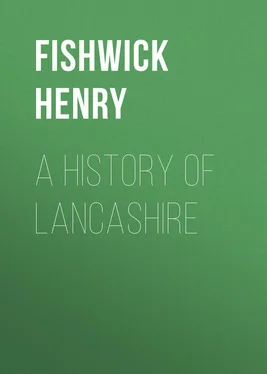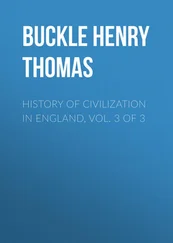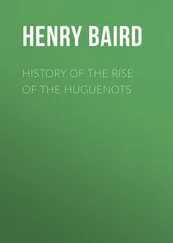Henry Fishwick - A History of Lancashire
Здесь есть возможность читать онлайн «Henry Fishwick - A History of Lancashire» — ознакомительный отрывок электронной книги совершенно бесплатно, а после прочтения отрывка купить полную версию. В некоторых случаях можно слушать аудио, скачать через торрент в формате fb2 и присутствует краткое содержание. Жанр: foreign_antique, foreign_prose, на английском языке. Описание произведения, (предисловие) а так же отзывы посетителей доступны на портале библиотеки ЛибКат.
- Название:A History of Lancashire
- Автор:
- Жанр:
- Год:неизвестен
- ISBN:нет данных
- Рейтинг книги:4 / 5. Голосов: 1
-
Избранное:Добавить в избранное
- Отзывы:
-
Ваша оценка:
- 80
- 1
- 2
- 3
- 4
- 5
A History of Lancashire: краткое содержание, описание и аннотация
Предлагаем к чтению аннотацию, описание, краткое содержание или предисловие (зависит от того, что написал сам автор книги «A History of Lancashire»). Если вы не нашли необходимую информацию о книге — напишите в комментариях, мы постараемся отыскать её.
A History of Lancashire — читать онлайн ознакомительный отрывок
Ниже представлен текст книги, разбитый по страницам. Система сохранения места последней прочитанной страницы, позволяет с удобством читать онлайн бесплатно книгу «A History of Lancashire», без необходимости каждый раз заново искать на чём Вы остановились. Поставьте закладку, и сможете в любой момент перейти на страницу, на которой закончили чтение.
Интервал:
Закладка:
The appeal was in vain, and the wretched Britons were left to their own resources. That they were disorganized and without leaders will easily be understood, and to this must be added that for years the best of the youths had been trained as recruits and drafted off to the Continent, from whence very few returned; and then, again, the inhabitants, especially in the North (including Lancashire), must have been dreadfully reduced by the ravages continually made by the Picts and Scots. Thus it was that Lancashire, with the rest of the country, became an easy prey, first to the marauding foes from the North, and afterwards to those races which ultimately became the makers of England.
It is curious to notice the Roman influence on traditions still common in modern Lancashire – the beating of parish bounds recalls the Roman Terminalia in honour of the god of limits and boundaries; May Day is the festival of Flora; the marriage–ring, the veil, the wedding gifts, and even the cake, are all Roman. Our funeral customs are also Roman – the cypress and the yew, the sprinkling of dust on the coffin, the flowers on the grave, and the black clothes. 13 13 E. Sanderson, “Hist. of England,” p. 19.
CHAPTER IV
ROMAN REMAINS
The history of Roman Lancashire has so recently been published 14 14 “Roman Lancashire,” W. Thompson Watkin; Liverpool, 1883.
that, even if our space would allow (which it will not), it would be unnecessary, in a work of this description, either to furnish too much detail, or to dwell too long on the vexed questions of the subject which have not even yet been settled.
When the Romans invaded Lancashire, one of their chief difficulties was the want of roads, which rendered many parts of the district almost untenable, and to remedy this state of things, one of their first acts after conquest must have been to construct a way by which access could easily be gained to the newly–acquired territory. As everyone knows, the Romans were skilful in all kinds of engineering work, and as road–makers they have never been excelled; so durable were their pavements that we find remains of them still in all parts of the country. Up hill and down dale they went, from point to point, nearly always in a straight line – if a bog was in the way it was filled up; if a mountain, it was crossed. Taking these roads as they are now acknowledged by antiquaries to have run, and following alone their route, we shall come across the chief remains which time has left of our conquerors and rulers.
The main Roman roads in Lancashire are all believed to have been constructed during the Higher Empire; that is, at or before the time of Hadrian (A.D. 117–128). The minor roads are of later and uncertain date.
Of the nine towns which became Roman coloniæ , the nearest to Lancashire were Eboracum ( York ), and Deva ( Chester ), but Mancunium ( Manchester ) was also a great military centre, and from it there were five Roman roads. 15 15 There are also traces of two other supposed Roman roads.
Two of these came from the Cheshire side of the Mersey, one passing through Stretford, and the other through Stockport to Buxton.
All trace of the road from Manchester to Stretford has disappeared, but its course ran through Cornbrook (near which it was cut through by the Bridgewater Canal) and by the botanical gardens to Crossford Bridge, on the Mersey. A few small remains have from time to time been found at Stretford, but scarcely sufficient to justify the idea that here was a Roman camp. 16 16 Lanc. and Ches. Ant. Soc. , iii. 262.
On the Stockport side of the Mersey we have traces of the road to Buxton, but on the Lancashire side its site is covered by the modern highway, part of which is still known as High Street.
Another of the approaches to Manchester was from the east. This also only for a short distance was on Lancashire soil. It came from Yorkshire, and, passing through Glodwick and Hollinwood, in the parish of Oldham, skirts the township of Failsworth, where at the end of the last century it was visible for upwards of a mile, and was commonly known as the “Street,” or “Street Lane.” 17 17 Whitaker’s “History of Manchester,” 1771.
At Newton Heath traces of it were seen in 1857, and Whitaker saw remains of it in Ancoats and Ardwick.
In making the Oldham Park, a number of copper coins from the period of Antoninus Pius (A.D. 135) to Victorinus (A.D. 218) were found, and in 1887, during the excavations made for Chamber Mill, near the site of the road, a box was unearthed which contained 300 bronze and brass coins. The following were verified: Antoninus Pius (A.D. 135–161), Marcus Aurelius (A.D. 161–180), Commodus (A.D. 180–193), Septimius Severus (A.D. 193–211), Caracalla (A.D. 211–217), Julia Mamica (A.D. 222–235). 18 18 Lanc. and Ches. Ant. Soc. , viii. 156.
Before referring to the other roads from Manchester to the North and to the West, it will be well to glance at the Mancunium of the Romans, and it is needless, perhaps, here to remark that the building of the modern Manchester and Salford must of necessity have almost obliterated every material trace of this ancient stronghold.
Somewhere about the time of Agricola (A.D. 78–85), or possibly a little earlier, the Romans erected a castrum on a tongue of land made by a bend of the river Medlock. Whitaker, the Manchester historian, 19 19 Whitaker as an authority is good where he is describing things which he saw himself, but otherwise many of his theories border upon romance. (Vol. i., p. 49, 1773 edition.)
thus describes what remained of this in 1773:
The eastern side, like the western, is an hundred and forty [yards] in length, and for eighty yards from the northern termination the nearly perpendicular rampart carries a crest of more than two [yards] in height. It is then lowered to form the great entrance, the porta prætoria , of the camp: the earth there running in a ridge, and mounting up to the top of the bank, about ten in breadth. Then, rising gradually as the wall falls away, it carries an height of more than three for as many at the south–eastern angle. And the whole of this wall bears a broken line of thorns above, shews the mortar peeping here and there under the coat of turf, and near the south–eastern corner has a large buttress of earth continued for several yards along it. The southern side, like the northern, is an hundred and seventy–five [yards] in length; and the rampart, sinking immediately from its elevation at the eastern end, successively declines, till, about fifty yards off, it is reduced to the inconsiderable height of less than one [yard]. And about seventeen [yards] further there appears to have been a second gateway, the ground rising up to the crest of the bank for four or five at the point…
One on the south side was particularly requisite … in order to afford a passage to the river; but about fifty–three yards beyond the gate, the ground betwixt both falling away briskly to the west, the rampart, which continues in a right line along the ridge, necessarily rises till it has a sharp slope of twenty [yards] in length at the south–western angle. And all this side of the wall, which was from the beginning probably not much higher than it is at present, as it was sufficiently secured by the river and its banks before it, appears crested at first with an hedge of thorns, a young oak rising from the ridge and rearing its head considerably over the rest, and runs afterwards in a smooth line nearly level for several yards with the ground about it, and just perceptible to the eye, in a rounded eminence of turf.
As to the south–western point of the camp, the ground slopes away on the west towards the south, as well as on the south towards the west. On the third side still runs from it nearly as at first, having an even crest about seven feet in height, an even slope of turf for its whole extent, and the wall in all its original condition below. About an hundred yards beyond the angle was the Porta Decumana of the station, the ground visibly rising up the ascent of the bank in a large shelve of gravel, and running in a slight but perceivable ridge from it. And beyond a level of forty–five yards, that still stretches on for the whole length of the side, it was bounded by the western boundary of the British city, the sharp slope of fifty to the morass below it. On the northern and the remaining side are several chasms in the original course of the ramparts. And in one of them, about an hundred and twenty–seven yards from its commencement, was another gateway, opening into the station directly from the road to Ribchester. The rest of the wall still rises about five and four feet in height, planted all the way with thorns above, and exhibiting a curious view of the rampart below. Various parts of it have been fleeced of their facing of turf and stone, and now show the inner structure of the whole, presenting to the eye the undressed stone of the quarry, the angular pieces of rock, and the round boulders of the river, all bedded in the mortar, and compacted by it into one. And the white and brown patches of mortar and stone on a general view of the wall stand strikingly contrasted with the green turf that entirely conceals the level line, and with the green moss that half reveals the projecting points of the rampart. The great foss of the British city, the Romans preserved along their northern side for more than thirty yards beyond the eastern end of it, and for the whole beyond the western. And as the present appearances of the ground intimate, they closed the eastern point of it with a high bank, which was raised upon one part of the ditch, and sloped away into the other.
Читать дальшеИнтервал:
Закладка:
Похожие книги на «A History of Lancashire»
Представляем Вашему вниманию похожие книги на «A History of Lancashire» списком для выбора. Мы отобрали схожую по названию и смыслу литературу в надежде предоставить читателям больше вариантов отыскать новые, интересные, ещё непрочитанные произведения.
Обсуждение, отзывы о книге «A History of Lancashire» и просто собственные мнения читателей. Оставьте ваши комментарии, напишите, что Вы думаете о произведении, его смысле или главных героях. Укажите что конкретно понравилось, а что нет, и почему Вы так считаете.












